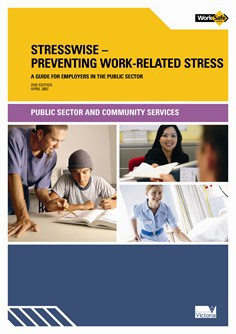All through the Presidency of George W Bush, safety professionals have been critical of the lack of action on workplace safety. As with many issues related to a new Democrat President in Barack Obama, organisations are beginning to publish their wishlists. The latest is the American College of Occupational and Environmental Medicine (ACOEM).
On 9 January 2009, ACOEM released a media statement which began
“American College of Occupational and Environmental Medicine (ACOEM) calls on the Health and Human Services Secretary-designee Tom Daschle to address the critical link between the health, safety, and productivity of America’s workers and the long-term stability of its health care system and economy as he begins work on the Obama administration’s health care agenda.”
The requested changes could be interpreted as a criticism of what the situation has been under George W Bush. ACOEM says the next government
“must put a greater emphasis on ensuring the health of the workforce in order to meet the twin challenges of an aging population and the rise of chronic disease…”
ACOEM President Robert R. Orford, MD goes into specifics
“…calling on Daschle to focus on preventive health measures aimed at workers that could range from screening and early detection programs to health education, nutritional support, and immunizations.”
The ACOEM reform program is based on the following
- “investing in preventive health programs for workers;
- creating new linkages between the workplace, homes and communities to reinforce good health;
- providing financial incentives to promote preventive health behaviors among workers; and
- taking steps to ensure that more health professionals are trained in preventive health strategies that can be applied in the workplace.”
Accepting that one Australian State, Victoria, is considerably smaller than the US (Victoria has a population of around 5,200,000, the US had 301,621,157 in 2007), it is interesting to remember what the Victorian Government proposed (or promised) just on 12 months ago concerning its WorkHealth initiative.
“Over time the program is expected to free up $60 million per year in health costs, as well as:
- Cut the proportion of workers at risk of developing chronic disease by 10 per cent;
- Cut workplace injuries and disease by 5 per cent, putting downward pressure on premiums;
- Cut absenteeism by 10 per cent; and
- Boost productivity by $44 million a year.”
[It would be of little real benefit to simply multiple the Victorian commitments by the differential with the US population to compare monetary commitments, as there are too many variable but if the WorkHealth productivity was imposed on the US, there could be a $2.6 billion, not a lot considering the size of President Bush’s bailouts and Barack Obama’s mooted bailout package. However, in the current economic climate, in order to gain serious attention, any proposal should have costs estimated up front and, ideally, show how the initiative will have minimal impact on government tax revenues – an approach that would require.]
In each circumstance there is the logic that unhealthy people are less productive than healthy people. This sounds right but it depends very much on the type of work tasks being undertaken. It is an accepted fact [red flag for contrary comments. ED] that modern workloads are considerably more supported by technology than in previous labour-intensive decades. Perhaps there are better productivity gains through (further) increased automation than trying to reverse entrenched cultural activity.
In late 2008 an OHS expert said to a group of Australian safety professionals in late-2008 that WorkHealth
“is not well-supported by the stakeholders. The trade unions feel it is a diversion away from regulated compliance and that it is going to refocus the agenda on the health of the worker and the fitness of the worker as the primary agenda, which is not what the [OHS] Act is setup to focus on. The employers are basically unkeen to get involved on issues they think are outside their control.”
The expert supported the position of some in the trade union movement that WorkHealth was always a political enthusiasm, some may say folly.
This is going to be of great importance in Australia with the possibility of new OHS legislation to apply nationally but also muddies the strategic planning of any new government that needs to show that it is an active and effective agent of change, as Obama is starting to do. In the US, the public health system is not a paragon and the workplace safety regulatory system is variable, to be polite. Fixing the public health system would seem to have the greater social benefit in the long term, and a general productivity benefit.
(It has to be admitted that the packaging of health care in employment contracts in the US is attractive employment benefit and one that seems to be vital to those who have it. Australia does not have that workplace entitlement but those employers struggling to become employers-of-choice should serious consider it, particularly as a work/family benefit.)
Each country is trying to reduce the social security cost burden on government and it would seem that public health initiatives would have the broader application as it covers the whole population and not just employees, or just those employees who are unfit.
Work health proposals in both jurisdictions need to re-examine their focuses and to pitch to their strengths. Business has enough to worry about trying to claw its way out of recession (even if the US government is throwing buckets of money to reduce the incline from the pit). OHS professionals have enough work trying to cope with the traditional hazards and recent, more-challenging, psychosocial hazards. Workplace health advocates are muddying the funding pool, confusing government strategic policy aims, and blending competing or complementary approaches to individual health and safety in the public’s mind.
Update 16 January 2009
More information on this issue is available HERE

